Twenty five years ago, I was fresh out of graduate school. I took a job with LTV (no, it’s not a TV station). Some of my friends thought it was some type of MTV off shoot. They were a defense contractor that manufactured the MLRS (multiple launch rocket system). LTV corporation had filed for chapter 11 and was attempting to give away their pension obligation to the Pension Bureau Guarantee Corporation.
I learned how to do something with nothing at LTV. Budgets were scarce. Facilities were challenging. My office was in a temporary (which soon became permanent) trailer. It wasn’t uncommon for roof links to occur.
My job was training specialist. It wasn’t unusual to get booted out of a classroom because of something better going on in the neighborhood. I found myself carrying overhead projectors from space to space and learning to conduct training in less than ideal locations.
There are hidden costs of bad or inadequate training spaces. Professionals spend lots of time shuffling materials from room to room. Participants are left with less than ideal experiences. The companies reputation can be tarnished.
In 1990, I went to work for Arco Oil and Gas Company. They had an entire floor of a Dallas high rise dedicated to training space. I was salivating! I felt like a kid in a candy store. ARCO had budgets for training. I jetted around the world and in 1 year conducted 183 days of scheduled training in multiple locations.
In 1993, I went out on my own. I have flown well over 1 million miles with American and have seen many examples of training facilities. I will give you my top suggestions if you are planning to create a new training space.
Have you heard of Learnist? It’s available as an iPad app. It allows you to capture learning and create a magazine like compilation of internet research. I compiled a Training Space review at this Learnist link. You may have to sign in with your facebook id.
Here are my top 10 considerations when planning a new training space or facility.
1. Exterior doors are a nice to have. It will prevent people from going in and out of the training room and disturbing others working as well as the training program. The door should be at the back of the room. Have you ever opened a door to realize that the entire class is staring at you? It can be quite traumatic.
2. Good lighting. Nothing is worse than sitting in a dimly lit room for long periods of time. Make sure lighting is adjustable so that LCD projector is easily viewed by all. Also windows should have shades so that it’s not too bright to see a projected image. Automatic shades are preferable; however, sometimes mechanical problems arise after years of usage.
3. Use soft light colors. Research best colors to use in a learning environment.
4. Use industrial carpet to muffle sounds.
5. Pick chairs and tables that are easily moved. Lightweight with wheels is good. Very often trainers will be rearranging room set-up at the last minute. Classroom style is fine for employee communication meetings, U shape is best for interactive discussions. Small tables is best when there will be lots of small group discussions. Room set-up affects the quality of discussion.
6. Install phone line, Internet Ethernet line, or wireless Internet easily accessible to employees and guests.
7. Make sure you select an LCD projector that easily connects to most devices. Read online reviews. Brightness of projection and ease of connection are important. Instructions for usage can help the technically challenged presenter.
8. Buy several high quality flip-charts. There is a difference between easels and flip-chart stands. Buy the stable flip-charts. Nothing is worse than trying to write on a flimsy chart that keeps jumping around. If masking tape is used to hang flip-chart paper around the room, walls may become damaged over time. If it were me, I would probably just plan on repainting every 2-3 years. Another option is to put a cork board strip around the room where you can hang flip-charts with push pins.
9. A refrigerator in room stocked with water and juices and a quality coffee maker can sit in the back of the room.
10. Storage closets should allow flip-charts and equipment storage. Strict ground rules for storage need to be established. Otherwise, the storage room will quickly be filled with old unused training materials and handouts.
Here is a compilation of pictures of nice training facilities.

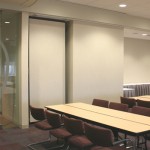
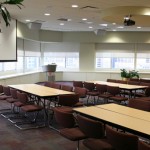
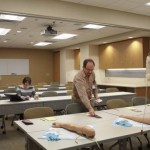


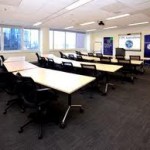
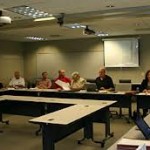
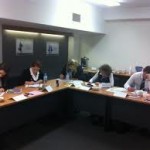
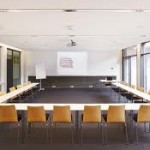
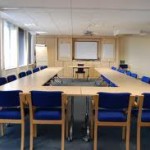
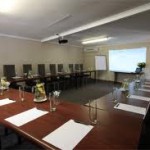
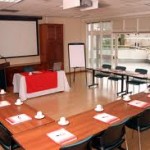
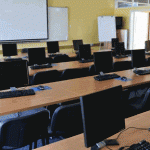


 Facebook
Facebook Twitter
Twitter Youtube
Youtube GooglePlus
GooglePlus LinkedIn
LinkedIn